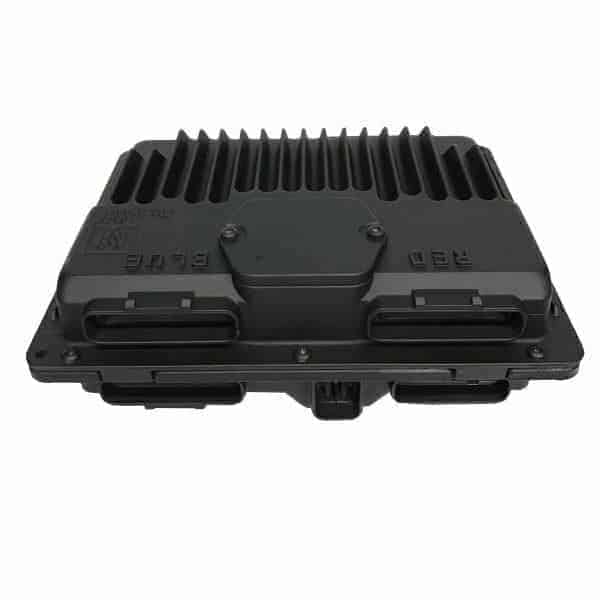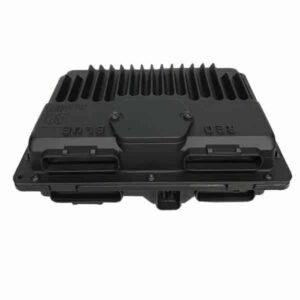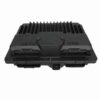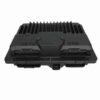Restore Your Van’s Reliability and Performance
Is your 1998-1999 Chevrolet Express 3500 Van running rough, stalling unexpectedly, or showing a persistent check engine light? These are classic signs of a failing Powertrain Control Module (PCM), the computer that serves as your vehicle’s brain. A faulty PCM can cause a cascade of frustrating issues, from poor fuel mileage and failed emissions tests to a complete no-start condition. Don’t let a bad module keep your workhorse off the road. This genuine, used OEM PCM is a dependable and affordable solution to get your van operating correctly again.
This isn’t just a part in a box. We take the guesswork and extra cost out of the repair by programming the module specifically for your vehicle. Before we ship it, we’ll flash it with the latest official GM software updates using the VIN you provide. This critical step ensures that the PCM communicates perfectly with your van’s engine, transmission, and other systems, just as it did from the factory. By installing a pre-programmed module, you bypass the need for an expensive trip to the dealership or a specialized shop for programming.
Common Signs of a Failing PCM
- ✔ Check Engine Light is on with communication error codes (like U0100) or internal processor fault codes (P0601, P0602, P0606).
- ✔ Your van experiences intermittent or constant stalling.
- ✔ Noticeable decrease in fuel economy.
- ✔ Harsh or erratic automatic transmission shifting.
- ✔ The engine cranks but refuses to start.
- ✔ Failure to pass a state emissions inspection.
A Technician’s Notebook
I remember a 1999 Express 3500 cargo van that came into the shop with a really tricky complaint. The owner, a plumber, said it would randomly die at stoplights, but only after it was fully warmed up. There were no consistent trouble codes, just a history of random communication faults. We checked fuel pressure, ignition components, and wiring harnesses for hours. On a hunch, I monitored the PCM data stream during a long test drive. Just as the engine cut out, I saw the 5-volt reference signal drop to zero. The PCM’s internal voltage regulator was failing under heat soak. We swapped in a quality, pre-programmed PCM like this one, and the van never stalled again. It’s a perfect example of how a failing computer can mimic a dozen other problems.
A Straightforward Guide to Installation
Installing your programmed 1998-1999 Express 3500 PCM is a manageable job for a DIYer with basic tools. The key is taking your time and ensuring the connections are clean and secure.
- Safety First: Disconnect the negative terminal from your vehicle’s battery and secure it away from the post to prevent any accidental reconnection.
- Locate the PCM: On most Express/Savana vans of this era, the PCM is located in the engine compartment on the driver’s side, often near the battery or firewall.
- Disconnect the Connectors: Carefully unclip and remove the electrical wiring harnesses from the old PCM. Inspect the pins on both the harness and the new module for any corrosion or damage. Clean them with a dedicated electronics cleaner if necessary.
- Remove the Old Module: Unbolt the old PCM from its mounting bracket. Keep the hardware as you will reuse it.
- Install the New Module: Mount the new PCM onto the bracket and secure it with the original bolts.
- Reconnect Everything: Firmly plug the wiring harnesses into the new PCM until they click into place. Reconnect the negative battery terminal.
- Perform Security Relearn: In many cases, you will need to perform a security relearn procedure to sync the new PCM with your van’s anti-theft system. This typically involves turning the key to the ‘ON’ position for 10-15 minutes, then off, and repeating two more times before starting the engine. Consult a service manual for the exact procedure for your vehicle.
Verified Vehicle Compatibility
This module, identified by service number 09366810, is a direct replacement for several part numbers and fits a wide range of GM trucks and vans. Please verify your original part number or the ID number 9355699. This part is compatible with the following vehicles:
- 1998-1999 Chevrolet & GMC C/K 1500, 2500, 3500 Pickups (Gasoline)
- 1998-1999 Chevrolet & GMC Suburban 1500, 2500 (Gasoline)
- 1998-1999 Chevrolet Tahoe & GMC Yukon (Gasoline)
- 1998-1999 Chevrolet Express & GMC Savana 1500, 2500, 3500 Vans (Gasoline)
- 1999 Cadillac Escalade
- 1998 Chevrolet Astro & GMC Safari
- 1998 Chevrolet S10, GMC Sonoma, Isuzu Hombre (4.3L V6)
- 1998 Chevrolet Blazer, GMC Jimmy, Oldsmobile Bravada, GMC Envoy (4.3L V6)
Note: This is a used, salvaged part. It has been tested for functionality and is ready for installation. Simply provide your VIN at checkout for programming.
Why do you need my VIN?
Why do you need my VIN?
Your Vehicle Identification Number (VIN) is essential for us to program the PCM with the correct software for your van’s specific engine, transmission, and options. This ensures seamless integration and proper vehicle operation without requiring a trip to the dealer.
Is this part difficult to install?
Installation is straightforward for most individuals with basic mechanical skills. It involves disconnecting the battery, unplugging the old module, swapping it with the new one, and reconnecting everything. The most important post-installation step is the security relearn procedure, which can be done without special tools.
What does ‘used’ or ‘salvaged’ mean for this part?
This means the PCM is a genuine, original equipment (OEM) part that was carefully removed from a recycled vehicle. It has been inspected and tested to ensure it is fully functional. This is a cost-effective way to get a high-quality OEM part without the high cost of a new one.
Will this fix my check engine light?
If the check engine light is caused by an internal PCM failure (common codes include P0601-P0606) or communication errors, then yes, this part is the correct fix. However, it’s crucial to properly diagnose the vehicle first, as other sensor or wiring issues can also trigger the light.
Do I need to do anything after installation?
Yes. After installing the PCM and reconnecting the battery, you must perform the vehicle’s security relearn procedure (also known as the Passlock or VATS relearn). This syncs the module to your keys and allows the engine to start. The procedure is simple and outlined in our installation guide and your vehicle’s service manual.



